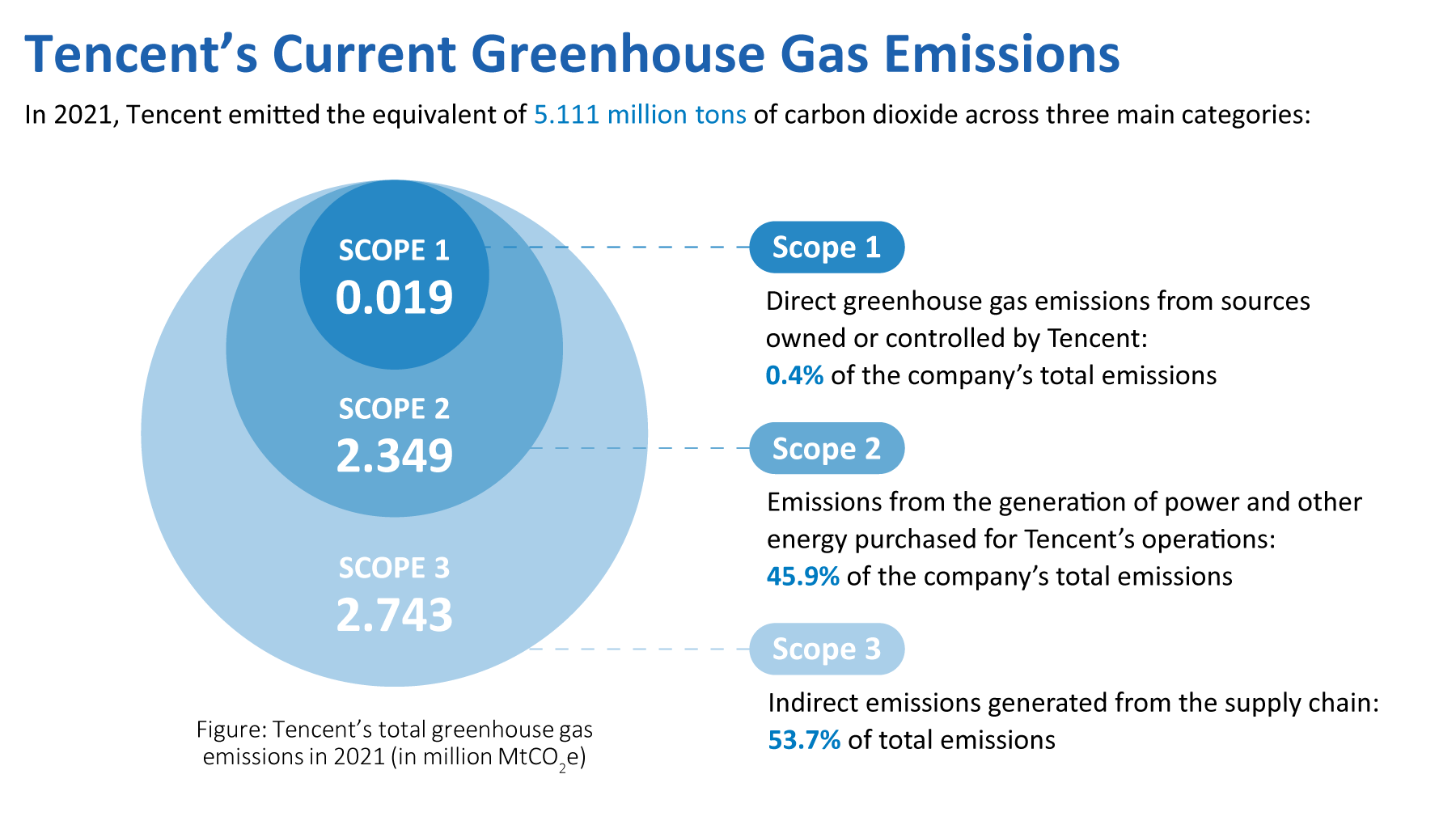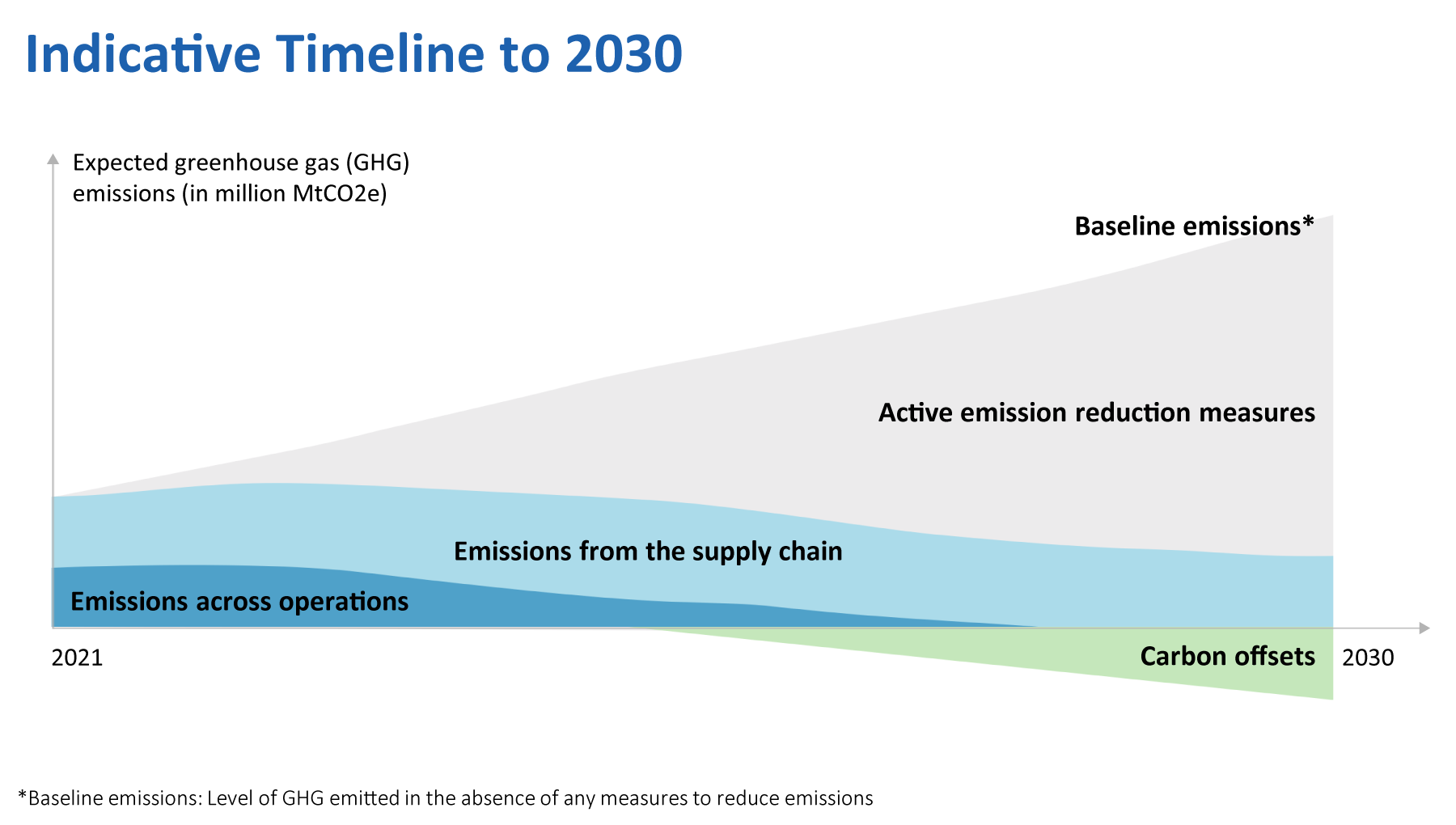From Challenge to Opportunity: Taking on Climate Change with Tech
In the hottest and most precarious decade on record1, more is at stake than ever. To avert a future of climate extremes, we know global carbon emissions must be halved by 20302. A goal this ambitious requires an urgent, concerted shift from a take-make-waste model to a truly net-zero, regenerative economy3.
To advance carbon neutrality as a business priority, world-leading internet and technology company Tencent is taking the lead. By turning intention into action, and embracing innovation as well as collaboration, Tencent shows how businesses of all sectors and sizes can move closer to net-zero.
1. Set out a direction of travel
For businesses everywhere, setting out a direction of travel and demonstrating progress against goals are the foundation for driving credible corporate action on climate change. This starts with taking stock of carbon emissions and transparently disclosing them to identify the best solutions. Tencent launched an internal review of its greenhouse gas emissions in early 2021. The findings over the past year now serve as the foundation for the company’s carbon neutrality roadmap. In the years ahead, Tencent will track its net-zero progress in its annual ESG reports, which are publicly available on Tencent’s website.
In 2021, Tencent's total carbon emissions amounted to 5.1 million metric tons, broken down into three categories:

Based on this carbon audit, Tencent has pledged to achieve carbon neutrality not only in its own operations (Scopes 1 and 2), but also in its supply chain (Scope 3), where 100% of energy used will be green energy by no later than 2030.
2. Focus on active carbon reduction methods
Knowing that energy accounts for nearly half of its total emissions has helped Tencent develop clear and robust plans to reduce emissions. This means prioritizing energy efficiency and the adoption of renewable energy, and supplementing these strategies with a minimum use of carbon offsets.
To enhance energy efficiency across its offices and data centers, Tencent is improving its power usage effectiveness (PUE), exploring energy-saving cooling technologies and stepping up energy monitoring through AI. Equally key to Tencent’s net-zero strategy is rapidly increasing its proportion of renewable energy, especially in electricity consumption. This means actively participating in green power trading and exploring investments in distributed as well as centralized renewable energy projects, particularly wind and solar. More than 80 MW of new energy projects have been built, or are being built, in Tencent’s data centers. This year, Tencent will purchase 504 million kWh of renewable energy – and it invites environmentally committed businesses to similarly switch to green energy.

3. Embrace the power of technology and digitalization
In the path to net-zero, technology is vital. As a tech company, Tencent has an insider’s perspective – and deep expertise – on using existing and emerging technologies to mitigate the impact of human activity on our planet. Tencent’s modular, prefabricated data centers are built with fourth-generation T-Block technology, which enables savings of 250 million kWh of electricity a year for a campus with 300,000 servers. Meanwhile, Tencent’s Tnebula AI carbon management platform, currently in use in more than 100 data centers globally, can capture and analyze energy data in real time to pinpoint site-specific solutions.
Companies without in-house solutions can leverage open-source technologies. Tencent leads the carbon neutrality professional committee at the Internet+ Development Association of China (IDAC), an open access patent technology organization that makes it easier for enterprises to use low-carbon technologies for free. Tencent Cloud also established a Carbon Neutrality Accelerator program for innovative start-up enterprises around the world, focusing on using AI to save energy and reduce emissions, while advancing carbon neutrality and carbon trading.
4. Team up with consumers
With a critical mass of consumers comes a huge capacity for change. Tencent is using its influence, reach and creativity to inspire its users to take climate action, from promoting low-carbon lifestyles and green consumption habits through sustainability-themed mini programs and mobile games on its popular WeChat app, to supporting the United Nations Environment Progam’s Playing for the Planet Alliance through its video game subsidiary, TiMi Studio Group. Eco-friendly messages in TiMi’s games have reached more than 110 million players globally. When fostering low-carbon lifestyles, the medium is the message. First steps can begin with connecting directly with consumers on the platforms they know best.

5. Collaborate far and wide
There’s strength in numbers, and scale in partnerships. By digitizing business operations and optimizing energy efficiency across buildings and parks, Tencent is facilitating a low-carbon transformation across the industrial sector. Tencent’s work and collaboration software suite, including Tencent Meeting/VooV Meeting, WeCom, Tencent Docs and Tencent WeCard, has cut more than 15 million tons of carbon emissions by facilitating remote business and reducing the need for business travel. Tencent Cloud’s green computing power also helps businesses build low-carbon digital infrastructure.
Where feasible, businesses should join the public-private discourse, keep up-to-date, and contribute to net-zero innovations. Tencent’s Sustainable Social Value Carbon Neutrality Lab is actively exploring partnerships with universities and research institutes, continuously supporting carbon neutrality technology innovation and digital practices, and promoting the transformation of industry, academia and research.
6. Think global, act social
Achieving sustainable social value through innovation is key for every business. To create broader social value, Tencent focuses on the ripple effects of carbon neutrality on rural revitalization and scientific development.
By looking at the big picture and pursuing partnerships in the carbon capture, utilization and storage (CCUS) value chain, Tencent is supporting the advancement of innovative technologies that accelerate the development and industrialization of low-carbon, zero-carbon and carbon-negative technologies. Tencent is cooperating with Iceland’s Carbfix, a CCUS solution that turns hard-to-abate CO2 into stone in less than two years, to promote a pilot project of CO2 mineralization and storage technology in China. It is the first pilot project of this technology in Asia.
“It is Tencent’s responsibility as a global technology leader to help the world achieve carbon neutrality, and it’s also an essential part of our vision to use tech for good,” said Pony Ma, Chairman and Chief Executive Officer of Tencent. “Not only do we believe this is the right thing to do for society, but we are eager to play our part as the global community progresses toward a carbon-neutral and more sustainable future.”
------------
